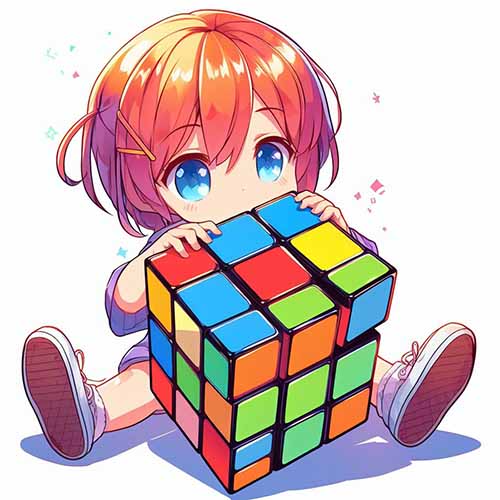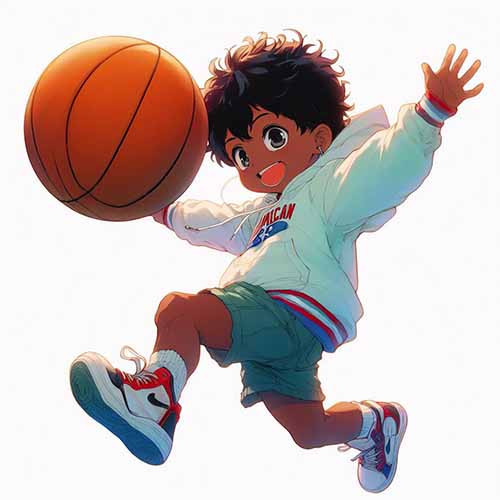Exploring Solid Shapes in Pre-K, K, and 1st Grade through Engaging Videos | Lesson Plans
-

Kids playing with solid shapes - By BING -
Solid shapes are three-dimensional objects that have length, width, and height. They are different from two-dimensional flat shapes, which have only length and width. Learning about solid shapes is essential for young children because it helps them develop their spatial awareness, geometry skills, and creativity.
This page will explore some fun and engaging ways to teach solid shapes to pre-k, kindergarten, and 1st grade students using videos, games, and songs.
Introduction: What are solid shapes, and how can we recognize them?
-
Solid shapes are everywhere in our world. We can find them in buildings, toys, food, nature, and more. Some common solid shapes are cubes, spheres, cones, and cylinders.
We can look at their faces, edges, vertices, and bases to recognize solid shapes.
- A face is a flat surface of a solid shape.
- An edge is where two faces meet.
- A vertex is where three or more edges meet.
- A base is a unique face that can be used to stand the shape on a flat surface.
-
SOLID SHAPES
-
BROWSE THE LESSON PLANS
-
-
Cubes: How to recognize cubes in everyday objects and environments
A cube is a solid shape that has six square faces, twelve edges, and eight vertices. All the faces are the same size and shape. A cube can be rotated in any direction and still look the same. Some examples of cubes are dice, Rubik's cubes, ice cubes, and sugar cubes.
To help students recognize cubes, you can practice cube recognition using this MathSkills4Kids video: https://www.youtube.com/watch?v=vABcX4xHat0.
READ FURTHER
-
Spheres: How to recognize spheres in everyday objects and environments
A sphere is a solid shape with one curved surface and no edges or vertices. It is perfectly round and smooth. A sphere can roll in any direction and still look the same. Some examples of spheres are balls, planets, oranges, and bubbles.
To help students recognize spheres, you can practice sphere recognition with them using this MathSkills4Kids video: https://www.youtube.com/watch?v=vAbwr8Hfct8.
-
Cones: How to recognize cones in everyday objects and environments
A cone is a solid shape with one circular base and one curved surface that narrows to a vertex point. A cone can stand on its base or on its vertex. Some examples of cones are ice cream cones, traffic cones, party hats, and pineapples.
To help students recognize cones, you can practice cone recognition using this MathSkills4Kids video: https://www.youtube.com/watch?v=-C4OcyZmlFg.
-
Cylinders: How to recognize cylinders in everyday objects and environments
A cylinder is a solid shape with two circular bases parallel and connected by a curved surface. A cylinder can stand on either base or on its side. Some examples of cylinders are cans, bottles, candles, and pipes.
To help students recognize cylinders, you can practice cylinder recognition with them using this MathSkills4Kids video: https://www.youtube.com/watch?v=6ei4sVrEyvY.
Matching and Naming Solid Shapes: How to use flashcards, games, and songs to match and name solid shapes
After introducing the four basic solid shapes to students, you can reinforce their learning using flashcards, games, and songs to match and name the shapes.
You can play this online game that challenges students to identify the correct shape based on its attributes: https://www.education.com/game/ski-racer-3d-shapes/.
Finally, you can sing this catchy song that reviews the names and features of the solid shapes: https://www.youtube.com/watch?v=guNdJ5MtX1A.
-
Conclusion
Teaching solid shapes to Pre-K and Kindergarten students can be fun and engaging with videos, games, and songs. By using these resources, you can help students develop their spatial awareness, geometry skills, and creativity. You can also extend their learning by asking them to find more examples of solid shapes in their surroundings or by creating their own solid shapes using clay or paper.
Thank you for reading this page on how to teach solid shapes to kids using MathSkills4Kids videos. We hope you found it helpful and informative. If you have any questions or feedback, please contact us. Moreover, do not forget to subscribe to our channel for more fantastic math videos for kids!
Please CLICK THE SHARE BUTTON to allow others to benefit from this content!
Happy teaching!




